- Home
- Paul Doherty
A Maze of Murders
A Maze of Murders Read online
A Maze of Murders
Paul Doherty
Copyright © 2003 Paul Doherty
The right of Paul Doherty to be identified as the Author of the Work has been asserted by him in accordance with the Copyright, Designs and Patents Act 1988.
Apart from any use permitted under UK copyright law, this publication may only be reproduced, stored, or transmitted, in any form, or by any means, with prior permission in writing of the publishers or, in the case of reprographic production, in accordance with the terms of licences issued by the Copyright Licensing Agency.
First published as an Ebook by Headline Publishing Group in 2013
All characters in this publication are fictitious and any resemblance to real persons, living or dead, is purely coincidental.
Cataloguing in Publication Data is available from the British Library
ISBN: 978 0 7553 9566 8
HEADLINE PUBLISHING GROUP
An Hachette UK Company
338 Euston Road
London NW1 3BH
www.headline.co.uk
www.hachette.co.uk
Contents
Title Page
Copyright Page
Letter to the reader
About the Author
Also by Paul Doherty
Praise for Paul Doherty
Dedication
Historical Note
List of Historical Characters
Prologue
Chapter 1
Chapter 2
Chapter 3
Chapter 4
Chapter 5
Chapter 6
Chapter 7
Chapter 8
Chapter 9
Chapter 10
Chapter 11
Author’s Note
Letter to the Reader
History has always fascinated me. I see my stories as a time machine. I want to intrigue you with a murderous mystery and a tangled plot, but I also want you to experience what it was like to slip along the shadow-thronged alleyways of medieval London; to enter a soaringly majestic cathedral but then walk out and glimpse the gruesome execution scaffolds rising high on the other side of the square. In my novels you will sit in the oaken stalls of a gothic abbey and hear the glorious psalms of plain chant even as you glimpse white, sinister gargoyle faces peering out at you from deep cowls and hoods. Or there again, you may ride out in a chariot as it thunders across the Redlands of Ancient Egypt or leave the sunlight and golden warmth of the Nile as you enter the marble coldness of a pyramid’s deadly maze. Smells and sounds, sights and spectacles will be conjured up to catch your imagination and so create times and places now long gone. You will march to Jerusalem with the first Crusaders or enter the Colosseum of Rome, where the sand sparkles like gold and the crowds bay for the blood of some gladiator. Of course, if you wish, you can always return to the lush dark greenness of medieval England and take your seat in some tavern along the ancient moon-washed road to Canterbury and listen to some ghostly tale which chills the heart . . . my books will take you there then safely bring you back!
The periods that have piqued my interest and about which I have written are many and varied. I hope you enjoy the read and would love to hear your thoughts – I always appreciate any feedback from readers. Visit my publisher’s website here: www.headline.co.uk and find out more. You may also visit my website: www.paulcdoherty.com or email me on: [email protected].
Paul Doherty
About the Author
Paul Doherty is one of the most prolific, and lauded, authors of historical mysteries in the world today. His expertise in all areas of history is illustrated in the many series that he writes about, from the Mathilde of Westminster series, set at the court of Edward II, to the Amerotke series, set in Ancient Egypt. Amongst his most memorable creations are Hugh Corbett, Brother Athelstan and Roger Shallot.
Paul Doherty was born in Middlesbrough. He studied history at Liverpool and Oxford Universities and obtained a doctorate at Oxford for his thesis on Edward II and Queen Isabella. He is now headmaster of a school in north-east London and lives with his wife and family near Epping Forest.
Also by Paul Doherty
Mathilde of Westminster
THE CUP OF GHOSTS
THE POISON MAIDEN
THE DARKENING GLASS
Sir Roger Shallot
THE WHITE ROSE MURDERS
THE POISONED CHALICE
THE GRAIL MURDERS
A BROOD OF VIPERS
THE GALLOWS MURDERS
THE RELIC MURDERS
Templar
THE TEMPLAR
THE TEMPLAR MAGICIAN
Mahu (The Akhenaten trilogy)
AN EVIL SPIRIT OUT OF THE WEST
THE SEASON OF THE HYAENA
THE YEAR OF THE COBRA
Canterbury Tales by Night
AN ANCIENT EVIL
A TAPESTRY OF MURDERS
A TOURNAMENT OF MURDERS
GHOSTLY MURDERS
THE HANGMAN’S HYMN
A HAUNT OF MURDER
Egyptian Mysteries
THE MASK OF RA
THE HORUS KILLINGS
THE ANUBIS SLAYINGS
THE SLAYERS OF SETH
THE ASSASSINS OF ISIS
THE POISONER OF PTAH
THE SPIES OF SOBECK
Constantine the Great
DOMINA
MURDER IMPERIAL
THE SONG OF THE GLADIATOR
THE QUEEN OF THE NIGHT
MURDER’S IMMORTAL MASK
Hugh Corbett
SATAN IN ST MARY’S
THE CROWN IN DARKNESS
SPY IN CHANCERY
THE ANGEL OF DEATH
THE PRINCE OF DARKNESS
MURDER WEARS A COWL
THE ASSASSIN IN THE GREENWOOD
THE SONG OF A DARK ANGEL
SATAN’S FIRE
THE DEVIL’S HUNT
THE DEMON ARCHER
THE TREASON OF THE GHOSTS
CORPSE CANDLE
THE MAGICIAN’S DEATH
THE WAXMAN MURDERS
NIGHTSHADE
THE MYSTERIUM
Standalone Titles
THE ROSE DEMON
THE HAUNTING
THE SOUL SLAYER
THE PLAGUE LORD
THE DEATH OF A KING
PRINCE DRAKULYA
THE LORD COUNT DRAKULYA
THE FATE OF PRINCES
DOVE AMONGST THE HAWKS
THE MASKED MAN
As Vanessa Alexander
THE LOVE KNOT
OF LOVE AND WAR
THE LOVING CUP
Kathryn Swinbrooke (as C L Grace)
SHRINE OF MURDERS
EYE OF GOD
MERCHANT OF DEATH
BOOK OF SHADOWS
SAINTLY MURDERS
MAZE OF MURDERS
FEAST OF POISONS
Nicholas Segalla (as Ann Dukthas)
A TIME FOR THE DEATH OF A KING
THE PRINCE LOST TO TIME
THE TIME OF MURDER AT MAYERLING
IN THE TIME OF THE POISONED QUEEN
Mysteries of Alexander the Great (as Anna Apostolou)
A MURDER IN MACEDON
A MURDER IN THEBES
Alexander the Great
THE HOUSE OF DEATH
THE GODLESS MAN
THE GATES OF HELL
Matthew Jankyn (as P C Doherty)
THE WHYTE HARTE
THE SERPENT AMONGST THE LILIES
Non-fiction
THE MYSTERIOUS DEATH OF TUTANKHAMUN
ISABELLA AND THE STRANGE DEATH OF EDWARD II
ALEXANDER THE GREAT: THE DEATH OF A GOD
THE GREAT CROWN JEWELS ROBBERY OF 1303
THE SE
CRET LIFE OF ELIZABETH I
THE DEATH OF THE RED KING
Praise for Paul Doherty
‘Teems with colour, energy and spills’ Time Out
‘Paul Doherty has a lively sense of history . . . evocative and lyrical descriptions’ New Statesman
‘Extensive and penetrating research coupled with a strong plot and bold characterisation. Loads of adventure and a dazzling evocation of the past’ Herald Sun, Melbourne
‘An opulent banquet to satisfy the most murderous appetite’ Northern Echo
‘As well as penning an exciting plot with vivid characters, Doherty excels at bringing the medieval period to life, with his detailed descriptions giving the reader a strong sense of place and time’ South Wales Argus
To an excellent nurse and healer,
Helen Dorgan
of Whipps Cross Hospital, North London
‘And when a beest is deed he hath no peyne;
But man after his deeth moot wepe and pleyne . . . ’
—Chaucer, ‘The Knight’s Tale,’
The Canterbury Tales
‘In the Middle Ages women doctors continued to practise
in the midst of wars and epidemics as they always had, for
the simple reason that they were needed.’
—Kate Campbellton Hurd-Mead,
A History of Women in Medicine
Historical Note
In 1453 the city of Constantinople fell to the Turks, marking the end of the Byzantine Empire. The fall of this illustrious city sent shock waves throughout Europe. Many legends grew up regarding its collapse even though the city was already weakened by constant attacks whilst the West had provided little support. The last Emperor of Constantinople died, sword in hand, surrounded by his Varangian guard, and a thousand years of glory were over. The fall of this city had a cultural impact upon the rest of Europe. Some of the contents of its gorgeous treasuries and well-stocked libraries flooded into Europe, a powerful influence in the emergence of the New Learning.
By coincidence, only a year after the fall of this city, the seeds of civil strife, the Wars of the Roses, became firmly rooted in English politics when Richard, Duke of York, was proclaimed ‘Protector of England’ during the alleged insanity of the Lancastrian King, Henry VI. Henry eventually recovered his wits, and York was ousted from power and was replaced by the Beauforts, under the Duke of Somerset, who led the Lancastrian faction in its bloody struggle against the House of York. Somerset, and Henry VI’s Queen, Margaret of Anjou, became embroiled in a series of desperate battles throughout England to decide once and for all the question of whether the Crown should be held by the House of Lancaster or York.
Richard of York was killed at the Battle of Wakefield in 1460. However, in 1461, Richard’s son Edward won a decisive victory at Towton in Yorkshire. The fortunes of both houses ebbed and flowed for the next ten years. In 1471 Edward inflicted two decisive defeats against Lancaster, at Barnet on the approaches to London and at Tewkesbury in the west country. Edward of York proclaimed himself Edward IV, Henry VI went into the dark and the only surviving Lancastrian claimant was the penniless Henry Tudor wandering the courts of Europe. . . .
List of Historical Characters
THE HOUSE OF LANCASTER
Henry VI: Henry of Lancaster, son of the great Henry V, regarded by some as a fool, by others as a saint, by a few as both. His weak, ineffectual rule led to vicious civil war between the Houses of York and Lancaster.
Margaret of Anjou: French Queen of Henry VI and the real power behind the throne; her hopes of victory were finally quashed by two outstanding victories by the Yorkist forces at Barnet and Tewkesbury in the early months of 1471.
Beaufort of Somerset: Leading Lancastrian general and politician; reputed lover of Margaret of Anjou, killed at Tewkesbury.
Henry Tudor: Last remaining Lancastrian claimant. By 1473, in exile at the Courts of France and Brittany.
THE HOUSE OF YORK
Richard of York: Father of Edward IV. Richard’s overbounding ambition to become king led to the outbreak of hostilities between York and Lancaster. He was trapped and killed at the Battle of Wakefield in 1460.
Cecily of York (nee Neville): ‘The Rose of Raby’; widow of Richard of York; mother of Edward, Richard and George of Clarence.
Edward IV: Successful Yorkist general and later King.
Edmund of Rutland: Edward’s brother, killed with the Duke of York at Wakefield.
George of Clarence: The beautiful but treacherous brother of Edward IV; a prince who changed sides during the Civil War.
Richard of Gloucester: Youngest brother of Edward IV; he played a leading part in the Yorkist victory of 1471.
ENGLISH POLITICIANS
Thomas Bourchier: Aged Archbishop of Canterbury.
William Hastings: Henchman to Edward IV.
Prologue
‘Kepe wel thy tonge, and thenk upon the crowe.’
—Chaucer, ‘The Manciple’s Tale,’
The Canterbury Tales, 1387
The chantry chapel of St. Michael and All the Angels in the Franciscan church of Greyfriars in the King’s own city of Canterbury was described by one chronicler as ‘a jewel within a jewel.’ Greyfriars was a beautiful church with its honey-coloured brick and dark red slate roof. Its windows had been widened and filled with multicoloured glass portraying scenes from the bible. At the height of summer, dazzling in the powerful sun, these paintings took on a life of their own, bathing the inside of the church with a vivid array of glorious colour.
Greyfriars had been widened and extended over the centuries, transepts added, roofs replaced. Its whitewashed walls were now covered with breathtaking pictures and mosaics. On a balmy summer’s evening it was easy to believe such a church truly was the House of God and the Gate to Heaven. The marble high altar, with its gold candlesticks, could be glimpsed through the door of the exquisitely carved rood screen which depicted the Crucifixion of Christ and other scenes from his Passion. On that Thursday evening in August 1473, the nave of the church lay quiet, a few candles spluttering weakly in the Lady Chapel to the left of the high altar; on the other side, in a shrine dedicated to St. Francis, two large candles glowed in their red glass containers. A haven of peace except for the pickpocket occupying the Mercy Chair in the main sanctuary. Restless and ill at ease, he sat clutching the arms of the chair, staring up at the high altar, eyes fixed on the crucifix as if begging the good Lord for help.
The pickpocket, known to the bailiffs of Canterbury as Laus Tibi, literally ‘Praise-to-Thee,’ had forgotten his real name. He vaguely recalled being raised in Gravesend but he had spent most of his life travelling the dusty highways of England earning a precarious living by thieving, pilfering and, above all, cutting purses and picking pockets. Laus Tibi was a greasy-haired, rat-faced, beanpole of a man with pockmarked cheeks and dark glittering eyes. He had joined the pilgrims coming in droves, now that summer was at its height, all keen to worship before the blessed bones of the martyr St. Thomas a Becket in Canterbury Cathedral.
Laus Tibi hadn’t been bothered about relics, St. Thomas’s bones or acquiring an indulgence which, after death, would release him from the pains of Purgatory. Laus Tibi had slipped through Canterbury’s gates like a wolf into a sheep pen. He had come to thieve, to cut purses, filch from the stalls and make a profit before winter set in. He would need money to rest up at some tavern until spring came: pilgrims were like coneys in the hay: they had to be flushed out and caught. It was easy. Pilgrims were so concerned about finding a tavern or a guest house, or staring, mouths agape, at the churches and fine buildings of Canterbury, that they would often forget about the bundles they carried or, more importantly, their purses, wallets and pockets. At first Laus Tibi couldn’t believe his good fortune. He took a priest’s purse in the marketplace, then a tailor’s wallet in a tavern after the man had drunk too deeply of the strong Kentish ale. A young merchant’s wife, an embroidered purse hanging from the decorated belt round her slim wais
t, had been easy prey: the purse had yielded a harvest of one gold coin, freshly minted by the King’s treasury in London, some silver pennies and a set of ave beads. Laus Tibi had sold the latter as a sacred relic to a reeve from Devon. Eventually Laus Tibi had been able to secure a garret in the Grey Weasel tavern just off the marketplace: bed and board, pots of ale, and even the attentions of a comely chambermaid.
In the end, however, Laus Tibi had stayed too long; the alarm was raised and the marketplace watched. Laus Tibi closed his eyes and ground his yellowing teeth in anger, his tongue seeking out the abscess just beneath his upper lip.
‘I should have taken better care.’
He opened his eyes, stared at the crucifix and felt a stab of guilt. Yet what could a man like him do? He had no trade, no home, no family; it was either steal or starve.
‘I should have been more careful,’ he repeated.
Laus Tibi’s hand stole beneath the filthy linen shirt he had filched from a garden, where it had been drying out over a fence. The pickpocket’s dirty fingers traced the outline of the brand mark, ‘F’ for felon, scorched onto his right shoulder three summers ago when he had been caught cutting purses near Smithfield Market in London. If the King’s sheriff saw that, little mercy would be shown: Laus Tibi would hang from the crossroads! He had passed such gibbets with their tarred, grisly remains, a chilling warning to lawbreakers. Nevertheless, Laus Tibi had believed, like the gambler he was, that the dice would always fall in his favour – until a week ago.
Laus Tibi had watched that fat priest moving like a bloated carp amongst the stalls of Canterbury marketplace, a fur-lined cloak over one arm, a heavy purse jingling like a bell from the leather belt round his portly waist. Like a hungry fox stalking a fat goose, Laus Tibi had followed. He’d cast his usual cautious cunning to the wind. He never had liked priests. They had no time for him. Very few showed him care, even fewer any compassion. Laus Tibi was determined to take both the cloak and the purse, a crowning achievement! He must have followed his quarry for at least an hour. The priest kept stopping at certain stalls displaying costly hangings and tapestries from abroad. Some hung in front of the stall, others were rolled up and protected under a canvas cloth. The priest was very careful. He would examine the texture, running it between his fingers, and ask the eager trader a spate of questions.

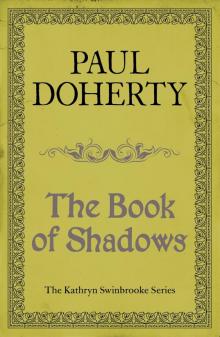 Book of Shadows
Book of Shadows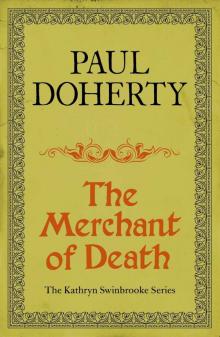 The Merchant of Death
The Merchant of Death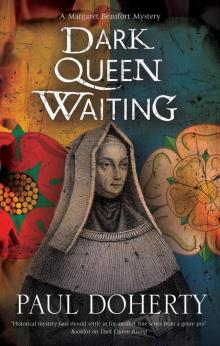 Dark Queen Waiting
Dark Queen Waiting Devil's Wolf
Devil's Wolf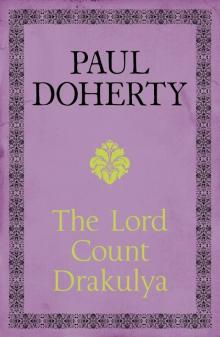 The Lord Count Drakulya
The Lord Count Drakulya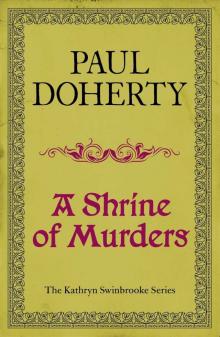 A Shrine of Murders
A Shrine of Murders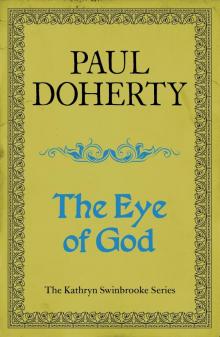 The Eye of God
The Eye of God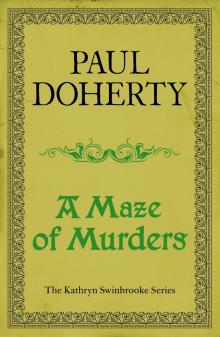 A Maze of Murders
A Maze of Murders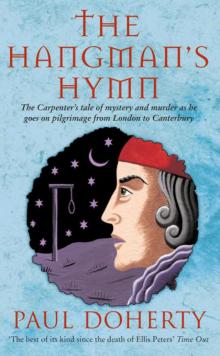 The Hangman's Hymn
The Hangman's Hymn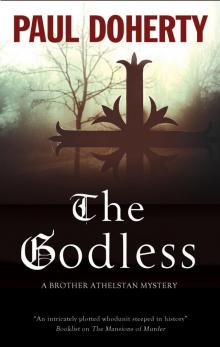 The Godless
The Godless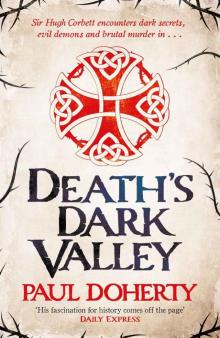 Death's Dark Valley
Death's Dark Valley Queen of the Night ar-4
Queen of the Night ar-4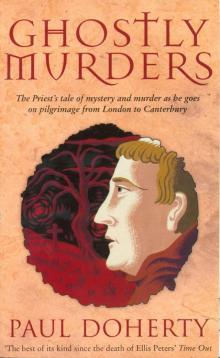 Ghostly Murders
Ghostly Murders Saintly Murders
Saintly Murders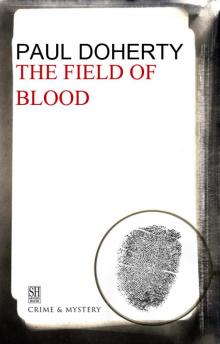 The Field of Blood
The Field of Blood Hugh Corbett 10 - The Devil's Hunt
Hugh Corbett 10 - The Devil's Hunt Assassin in the Greenwood hc-7
Assassin in the Greenwood hc-7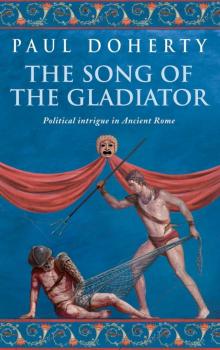 The Song of the Gladiator
The Song of the Gladiator Hugh Corbett 17 - The Mysterium
Hugh Corbett 17 - The Mysterium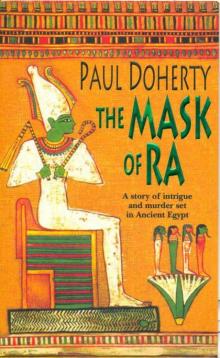 The Mask of Ra
The Mask of Ra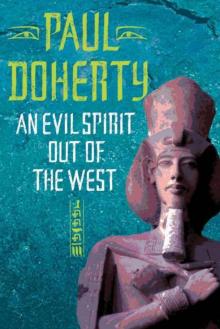 An Evil Spirit Out of the West (Ancient Egyptian Mysteries)
An Evil Spirit Out of the West (Ancient Egyptian Mysteries)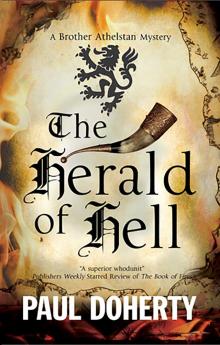 Herald of Hell
Herald of Hell Mathild 03 - The Darkening Glass
Mathild 03 - The Darkening Glass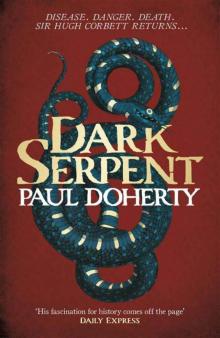 Dark Serpent (Hugh Corbett 18)
Dark Serpent (Hugh Corbett 18)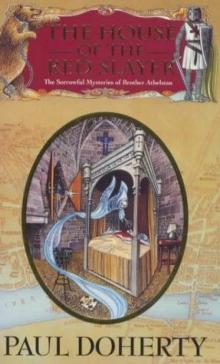 House of the Red Slayer smoba-2
House of the Red Slayer smoba-2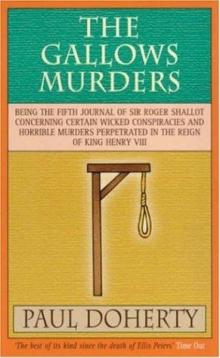 The Gallows Murders
The Gallows Murders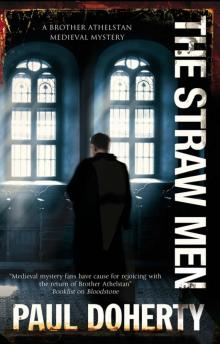 The Straw Men
The Straw Men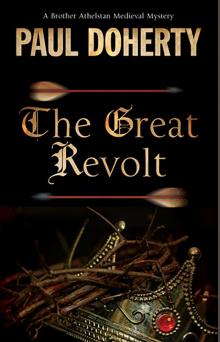 The Great Revolt
The Great Revolt The Rose Demon
The Rose Demon By Murder's bright light smoba-5
By Murder's bright light smoba-5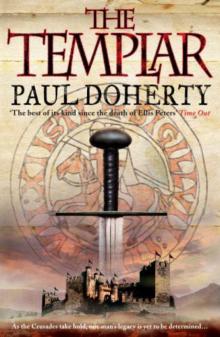 Templar
Templar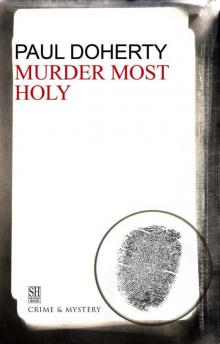 Murder Most Holy
Murder Most Holy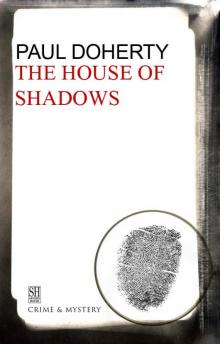 The House of Shadows
The House of Shadows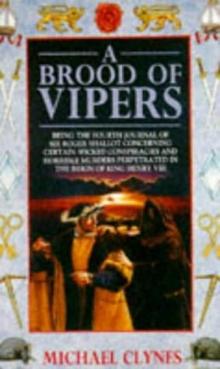 A Brood of Vipers srs-4
A Brood of Vipers srs-4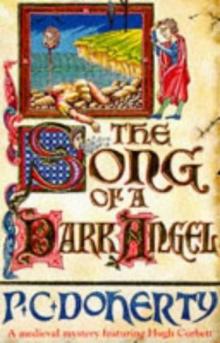 Song of a Dark Angel hc-8
Song of a Dark Angel hc-8 Satan in St Mary hc-1
Satan in St Mary hc-1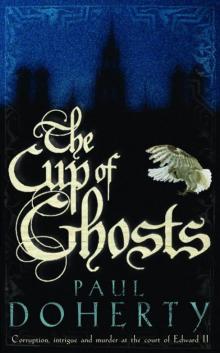 Mathilde 01 - The Cup of Ghosts
Mathilde 01 - The Cup of Ghosts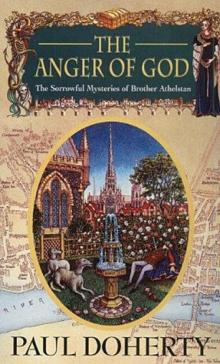 The Anger of God smoba-4
The Anger of God smoba-4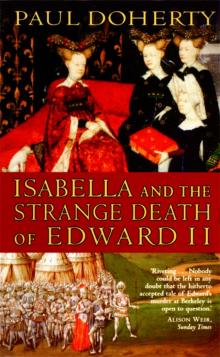 Isabella and the Strange Death of Edward II
Isabella and the Strange Death of Edward II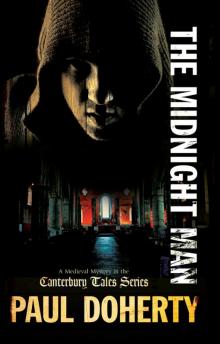 The Midnight Man ctomam-7
The Midnight Man ctomam-7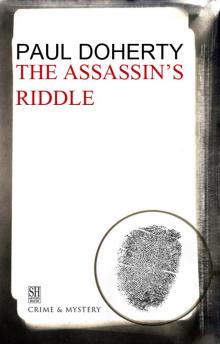 The Assassin's Riddle
The Assassin's Riddle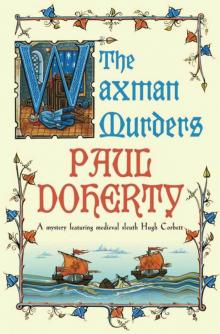 Hugh Corbett 15 - The Waxman Murders
Hugh Corbett 15 - The Waxman Murders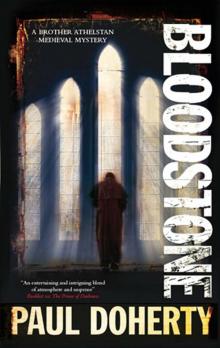 Bloodstone smoba-11
Bloodstone smoba-11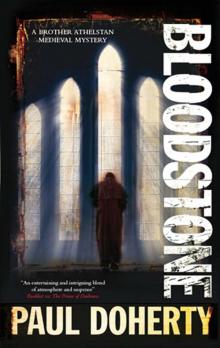 Bloodstone
Bloodstone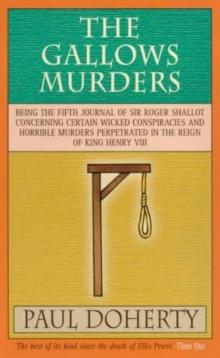 The Gallows Murders srs-5
The Gallows Murders srs-5 The Midnight Man
The Midnight Man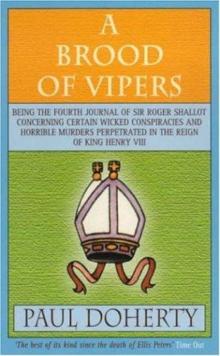 A Brood of Vipers
A Brood of Vipers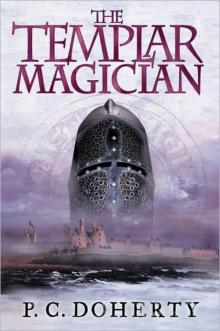 The Templar Magician
The Templar Magician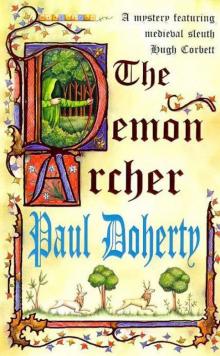 Hugh Corbett 11 - The Demon Archer
Hugh Corbett 11 - The Demon Archer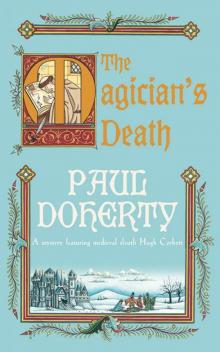 Hugh Corbett 14 - The Magician's Death
Hugh Corbett 14 - The Magician's Death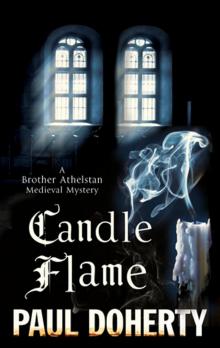 Candle Flame
Candle Flame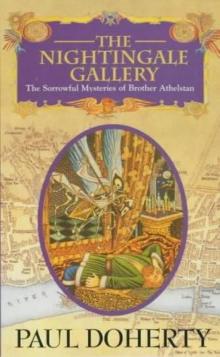 The Nightingale Gallery smoba-1
The Nightingale Gallery smoba-1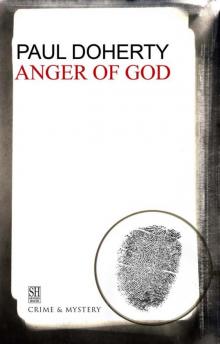 The Anger of God
The Anger of God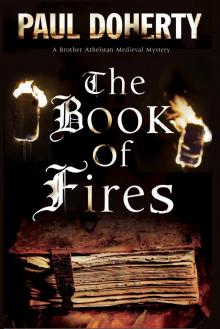 The Book of Fires
The Book of Fires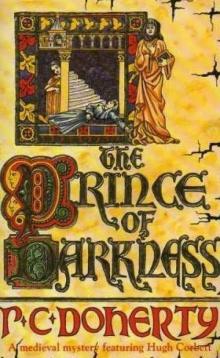 Prince of Darkness hc-5
Prince of Darkness hc-5 The House of Crows smoba-6
The House of Crows smoba-6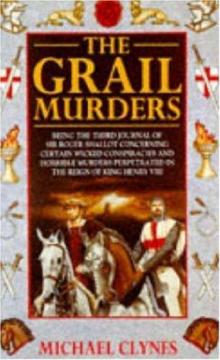 The Grail Murders
The Grail Murders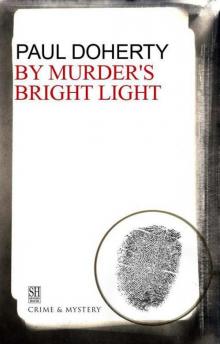 By Murder's Bright Light
By Murder's Bright Light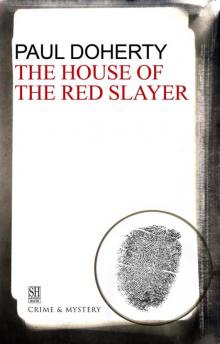 House of the Red Slayer
House of the Red Slayer The Devil's Domain
The Devil's Domain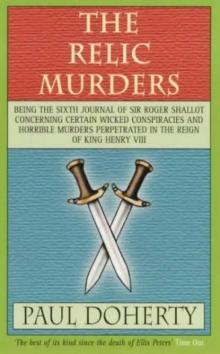 The Relic Murders srs-6
The Relic Murders srs-6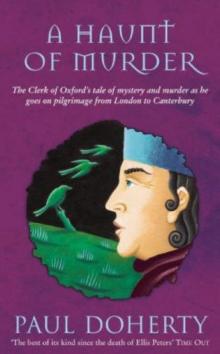 A haunt of murder ctomam-6
A haunt of murder ctomam-6 The Straw Men smoba-12
The Straw Men smoba-12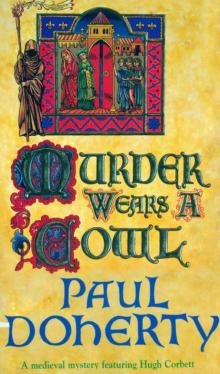 Hugh Corbett 06 - Murder Wears a Cowl
Hugh Corbett 06 - Murder Wears a Cowl An Ancient Evil (Canterbury Tales Mysteries)
An Ancient Evil (Canterbury Tales Mysteries)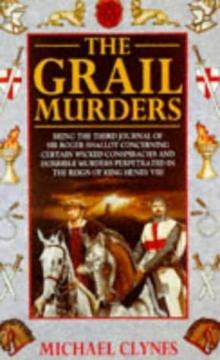 The Grail Murders srs-3
The Grail Murders srs-3 The Fate of Princes
The Fate of Princes The poisoned chalice srs-2
The poisoned chalice srs-2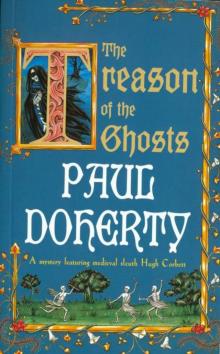 Hugh Corbett 12 - The Treason of the Ghosts
Hugh Corbett 12 - The Treason of the Ghosts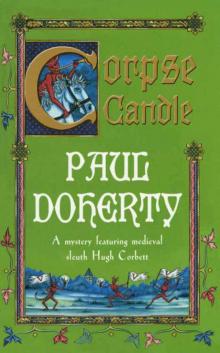 Hugh Corbett 13 - Corpse Candle
Hugh Corbett 13 - Corpse Candle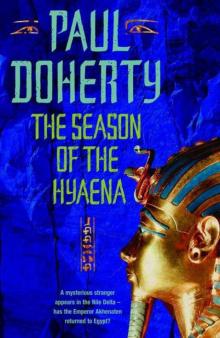 The Season of the Hyaena (Ancient Egyptian Mysteries)
The Season of the Hyaena (Ancient Egyptian Mysteries)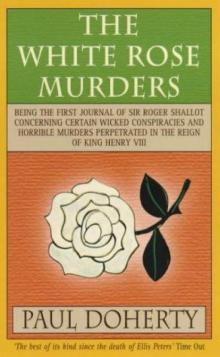 The White Rose murders srs-1
The White Rose murders srs-1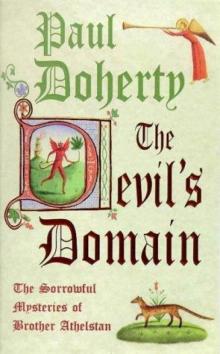 The Devil's domain smoba-8
The Devil's domain smoba-8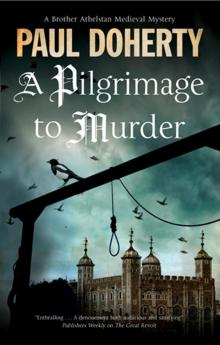 A Pilgrimage to Murder
A Pilgrimage to Murder Roseblood
Roseblood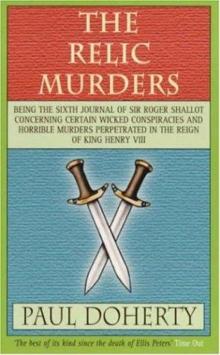 The Relic Murders
The Relic Murders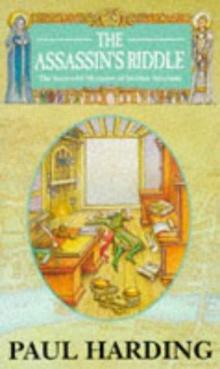 The Assassin's riddle smoba-7
The Assassin's riddle smoba-7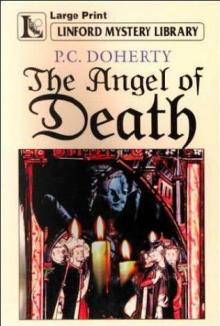 Angel of Death hc-4
Angel of Death hc-4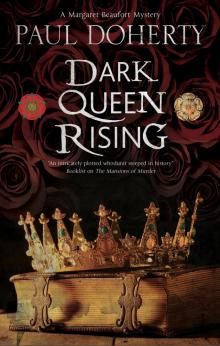 Dark Queen Rising
Dark Queen Rising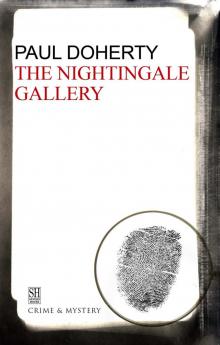 The Nightingale Gallery
The Nightingale Gallery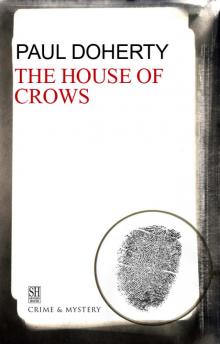 The House of Crows
The House of Crows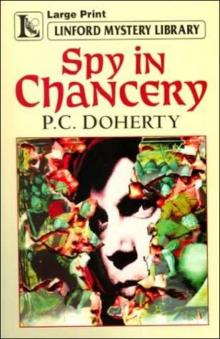 Spy in Chancery hc-3
Spy in Chancery hc-3